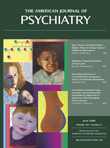Young Burned Children: The Course of Acute Stress and Physiological and Behavioral Responses
Abstract
Objective: Symptoms of posttraumatic stress disorder (PTSD) are a focus of much research with older children, but little research has been conducted with young children, who account for about 40% of all pediatric burn injuries. This is a longitudinal study of 72 acutely burned children (12–48 months old) that assessed the course of acute posttraumatic symptoms and physiological reactivity. Method: Parents were interviewed shortly after their child was admitted to the hospital and 1 month after discharge. PTSD symptoms were measured with the Diagnostic Interview for Children and Adolescents (DICA) module. Nurses recorded the child’s physiological data throughout the hospital stay. The child’s physical and behavioral responses were assessed in a laboratory at about 1 month after discharge. Results: Reduced social smiling in the children was related to PTSD symptoms, as measured by the DICA, and heart rate at 24 hours and 7 days. Reduced vocalization was related to the child’s rating of pain at 24 hours. Smiling and vocalizations were also related to some DICA cluster scores but not avoidance. Conclusions: Preschool children admitted to a burn unit demonstrated PTSD symptoms and physiological reactivity. There was a relation to the frequency of smiles and vocalizations.



